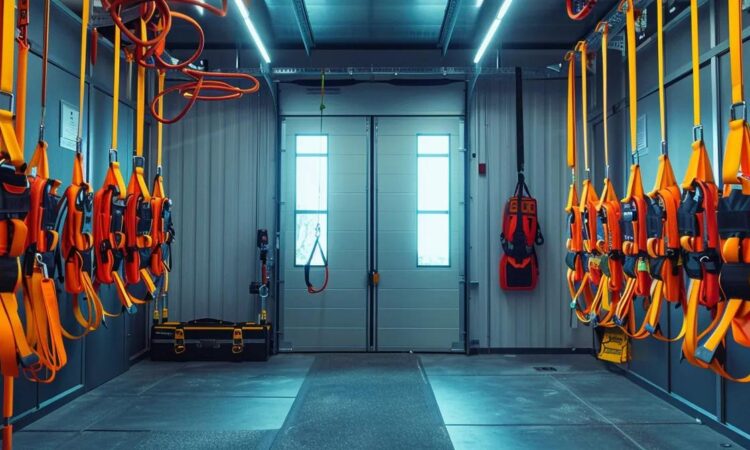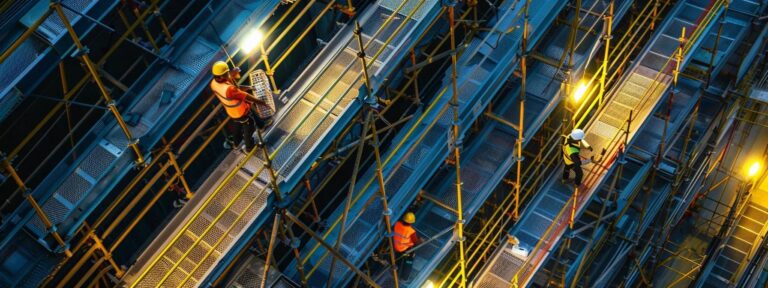Fall Protection Maintenance and Training: A Preventive Strategy for Safer Workspaces
Fall protection maintenance and training provided by us fall protection are essential components of workplace safety that protect employees from injury and ensure continuous compliance with regulatory standards. Organizations that prioritize routine inspection, professional maintenance (annual-maintenance) and comprehensive safety training benefit from reduced downtime, enhanced productivity, and a stronger safety culture. Our design-installation approach further integrates modern technologies to support a proactive safety environment. Our guardrail systems, lifeline systems, and ladder systems are designed with expertise to support various operations in industries-we-serve, ensuring optimal protection and efficiency. For more details, please visit our about-us page or get a free quote to tailor your fall protection needs.
Why Is Fall Protection Maintenance Essential for Workplace Safety?
Fall protection maintenance is fundamental because it protects employees from falls and equipment failure. In industries-we-serve such as construction, manufacturing, and warehousing, regular upkeep of fall protection gear—including lifeline systems, ladder systems, guardrail systems, harnesses, lanyards, and other personal protective equipment (PPE)—ensures that these components perform as designed, reducing the risk of severe injuries. Routine annual-maintenance minimizes degradation such as corrosion and wear, which can lead to unexpected failures during critical operations. A well-maintained safety system, combined with smart design-installation strategies, also boosts employee confidence and adherence to safety protocols, contributing to a robust safety culture in high-risk environments. For further insights and updates, feel free to visit our blog or check out our about-us page to get a free quote from us fall protection.
What Are the Key Components of Fall Protection Equipment?
The essential components include the harness, lanyard, anchorage point, lifeline, and connecting hardware. In design-installation of these systems, ladder systems play a critical role in providing safe access. The harness distributes the force of a fall, while the lanyard connects the worker to a secure anchorage point. Lifelines—whether horizontal or vertical such as lifeline systems—help limit impact. In industries-we-serve, guardrail systems and other safety devices are integrated into overall safety strategies. These components work together as a system to provide a fail-safe barrier against falls, ensuring each part meets rigorous safety standards and is regularly inspected for defects. Regular annual-maintenance confirms that safety protocols, including us fall protection measures, are consistently followed. For more insights, visit our blog and get a free quote for comprehensive safety evaluations.
How Does Regular Maintenance Prevent Equipment Failure?
In the industries-we-serve sector, regular maintenance identifies signs of wear, degradation, or malfunction before they lead to failure. As an integral part of annual-maintenance efforts, scheduled inspections and cleaning remove contaminants that contribute to corrosion. Following manufacturer guidelines and design-installation best practices ensures that bolts, straps, and other critical parts are replaced when needed. Moreover, routine checks on ladder systems, guardrail systems, and lifeline systems as part of us fall protection measures further enhance workplace safety. Proper documentation not only proves compliance but also helps predict future issues, reducing downtime and replacement costs.
What Are the Risks of Neglecting Fall Protection Maintenance?
Neglect can lead to equipment failure, including issues with ladder systems, causing severe injuries or fatalities. An irregular annual-maintenance schedule or defective gear, such as insufficient guardrail systems, raises the risk of catastrophic falls, legal liabilities, and higher insurance premiums. Additionally, poor design-installation practices can exacerbate these issues, especially when us fall protection protocols are overlooked. In many cases, failing to maintain fall protection equipment, including critical lifeline systems, results in regulatory fines and reputational damage that affect an organization’s financial stability.
How Do Fall Protection Equipment Inspections Ensure Compliance and Safety?
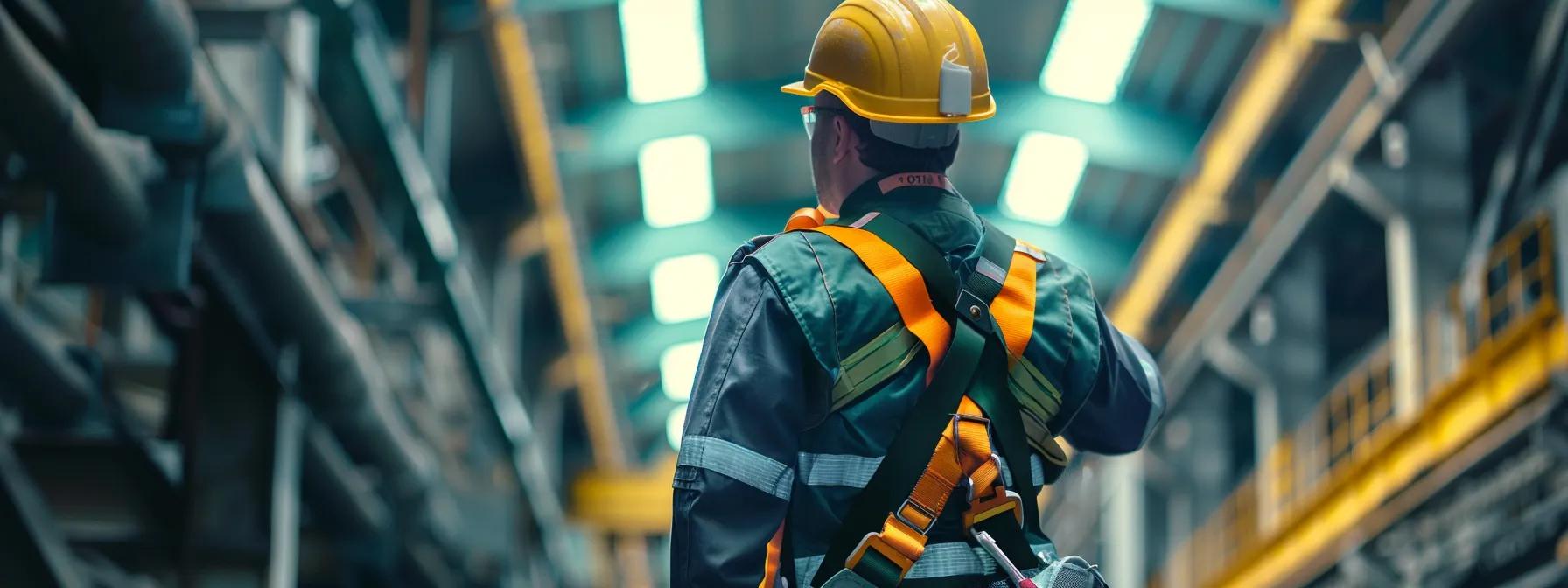
Regular inspections verify that all equipment components, including ladder systems, guardrail systems, and lifeline systems, function correctly, meet American National Standards Institute (ANSI) requirements, and adhere to Occupational Safety and Health Administration (OSHA) guidelines. Inspections detect defects early and prompt necessary repairs or replacements, preventing accidents. They also serve as a key part of risk management by providing data to predict equipment lifespan and schedule annual-maintenance. Further, periodic checks on design-installation practices ensure that us fall protection measures remain effective. For more detailed sector insights, visit industries-we-serve. To learn more about our approach, check out the about-us section on our blog and get a free quote for service inquiries.
What Are the Industry Standards for Fall Protection Inspections?
Industry standards, set by OSHA, ANSI, and other organizations, require periodic evaluations (annual-maintenance) of safety components. Inspections follow a specific checklist that includes visual and tactile assessments of straps, buckles, connectors, and hardware for wear, corrosion, or damage, with particular attention paid to ladder systems, guardrail systems, and lifeline systems as critical elements of us fall protection. Adhering to these standards ensures that only safe and reliable equipment is deployed in the workplace, supported by robust design-installation practices. For additional resources, visit our about-us page or check out our blog for industry updates, and if needed, get a free quote to safeguard your operations across various industries-we-serve.
How Often Should Fall Protection Equipment Be Inspected?
Equipment should be inspected at least annually, following a rigorous annual-maintenance schedule that incorporates design-installation best practices, with more frequent inspections recommended in high-risk scenarios—especially in us fall protection environments—or after significant incidents. For example, special attention should be given to ladder systems and guardrail systems, as they often require detailed checks; similarly, lifeline systems should be evaluated when applicable. Many organizations in industries-we-serve supplement formal inspections with monthly visual reviews to ensure equipment reliability throughout its operational life. For additional insights on maintenance best practices, please visit our blog.
What Are the Common Inspection Procedures for Harnesses and Lanyards?
Inspection procedures for harnesses and lanyards used in industries-we-serve include visual checks for fraying, cuts, burns, or chemical damage and measuring webbing for wear, ensuring the design-installation meets rigorous safety standards. Inspectors also verify that metal components are free of corrosion or deformation and that all connections and buckles function properly, ensuring proper integration with ladder systems and guardrail systems. A standardized checklist guides these inspections to maintain consistency and reliability, while annual-maintenance protocols help ensure that lifeline systems remain effective for us fall protection. For further details on safety enhancements, get a free quote.
How to Document and Track Inspection Results Effectively?
Effective documentation involves maintaining a log of the inspection date, inspector identity, equipment serial numbers, and detailed notes of any issues found concerning ladder systems and lifeline systems. Many organizations across industries-we-serve use digital inspection management systems to track trends, set alerts, and ensure that all follow-up actions, including annual-maintenance, are completed promptly, which is critical for design-installation projects. Comprehensive records support regulatory compliance and improve overall maintenance scheduling, ensuring that components like guardrail systems meet safety standards. For more insights, visit our blog or get a free quote if you require us fall protection services.
What Are the Best Practices for Fall Protection Safety Training and Education?
Best practices combine theoretical instruction with hands-on and scenario-based training to ensure employees understand proper use, maintenance, and emergency procedures for fall protection equipment such as lifeline systems and guardrail systems. Our design-installation approach integrates us fall protection guidelines—more details available on our about-us page and industries-we-serve section—to further support effective training. Tailored training programs address specific worksite risks, including ladder systems and annual-maintenance protocols, and include initial sessions as well as regular refresher courses. For more insights, check out our blog and get a free quote so that you can ensure every employee is prepared. Effective training improves compliance, reduces incidents, and empowers employees during emergencies.
Which Topics Should Fall Protection Training Cover?
Training topics should include the proper use of PPE (with emphasis on us fall protection), as recommended by industries-we-serve practices, inspection and maintenance procedures (including annual-maintenance best practices), emergency response actions enhanced by lifeline systems strategies, risk assessment, and hazard recognition. Additionally, workers should learn about relevant safety standards and regulatory requirements, such as guardrail systems, ladder systems protocols, and design-installation recommendations. For further insights, please visit our about-us and blog pages. Practical demonstrations and case studies further enrich the learning experience.
How Can Customized Training Improve Workplace Safety?
Customized training addresses the unique risks of specific work environments, particularly in industries-we-serve, by tailoring sessions to include the company’s protocols, equipment such as ladder systems, guardrail systems, and lifeline systems, and procedures. Emphasizing design-installation methods and annual-maintenance checks, this training is designed to integrate seamlessly with us fall protection standards. For further information, please visit about-us to learn more about our approach. Such targeted programs promote higher retention of safety practices, immediate compliance improvements, and allow for direct feedback to better adapt safety procedures to the workplace.
What Are the Benefits of Hands-on Fall Protection Training?
Hands-on training helps employees internalize safety procedures by practicing equipment donning, inspection, and usage in a controlled setting, including ladder systems and lifeline systems. This experiential learning improves emergency response times—as demonstrated in guardrail systems applications—boosts confidence, and reduces errors during critical operations.
How to Measure the Effectiveness of Safety Training Programs?
Effectiveness is measured through pre- and post-training evaluations, on-the-job observations utilizing ladder systems, and incident rate comparisons. Surveys, quizzes, and feedback—including insights from annual-maintenance assessments—help gauge improvements in knowledge, particularly around design-installation practices. Key performance indicators, such as reduced accident rates and better inspection compliance aided by guardrail systems and lifeline systems, further validate the training’s impact.
How Does Safety Equipment Maintenance Support Long-Term Fall Protection?
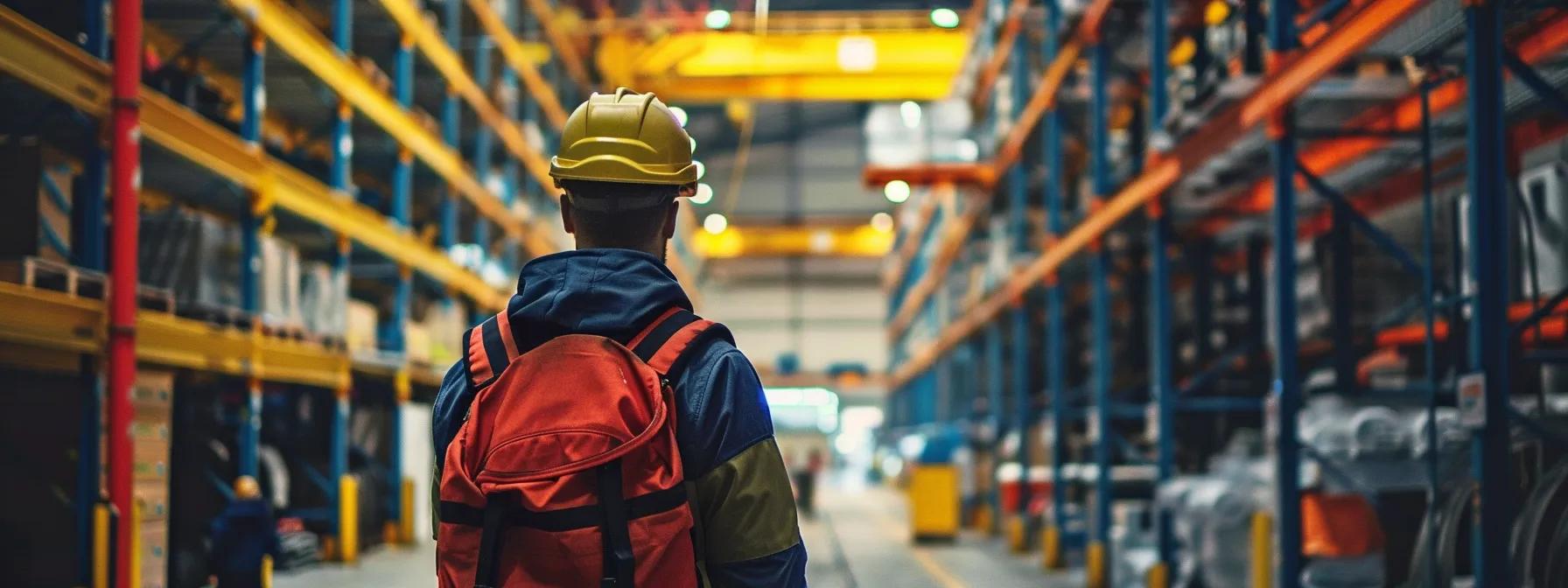
Regular cleaning, calibration, and repair (annual-maintenance) extend the lifespan of fall protection gear, including ladder systems, and ensure it performs safely during emergency situations. Proactive maintenance identifies issues—such as potential failures in guardrail systems—before they become hazards, reducing the risk of catastrophic accidents and leading to cost savings over time.
What Are the Common Maintenance Tasks for Fall Protection Gear?
Key maintenance tasks include visual and tactile inspections for damage, cleaning contaminated surfaces, lubricating metal components, and replacing worn parts as part of an annual-maintenance program. It is also important to store equipment properly to prevent accelerated wear and to calibrate any electronic safety devices as per manufacturer guidelines, particularly when servicing ladder systems, guardrail systems, and lifeline systems for us fall protection.
How Can Preventative Maintenance Extend Equipment Lifespan?
By addressing wear and tear proactively, preventative maintenance (e.g. annual-maintenance) prevents sudden equipment failures. Regular checks, including ladder systems evaluations for issues like frayed webbing or corroded connectors, allow for timely repairs, reducing repair costs, minimizing downtime, and ensuring that safety gear, such as us fall protection, remains in optimal condition.
What Role Does Professional Maintenance Play in Compliance?
Professional annual-maintenance, conducted by certified technicians, ensures that all equipment inspections, servicing, and repairs meet the highest industry and regulatory standards recognized by industries-we-serve. Detailed records and adherence to guidelines – including regular checks on ladder systems, guardrail systems, and lifeline systems – protect workers from injuries and help organizations avoid legal penalties and reputational harm.
How Can Organizations Implement a Comprehensive Fall Protection Program?
A comprehensive program integrates regular equipment maintenance (annual-maintenance), inspections, and targeted employee training with a robust safety policy. This approach involves developing clear guidelines, setting measurable safety objectives, and establishing accountability at all organizational levels. Furthermore, employee training now incorporates the proper use of ladder systems, guardrail systems, and lifeline systems to ensure us fall protection during day-to-day operations. Such programs facilitate effective risk assessments, continuous improvement, and open communication across the organization, as often detailed on our blog.
What Are the Steps to Develop a Fall Protection Policy?
Key steps include performing a risk assessment, consulting safety experts, and reviewing regulatory requirements. Organizations should identify high-risk areas and define clear protocols for equipment selection, inspection, and maintenance (including annual-maintenance and lifeline systems). A written policy, regularly updated to reflect new regulations and technologies, lays the foundation for consistent and effective safety practices by incorporating design-installation methods and ensuring proper integration of ladder systems.
How to Integrate Equipment Inspections With Employee Training?
Integration is achieved by incorporating practical demonstrations on equipment inspection and maintenance — including annual-maintenance and ladder systems — into training sessions. Employees should participate in routine inspection activities, such as checks on guardrail systems and us fall protection procedures, to reinforce their understanding of proper procedures, ensuring they are both knowledgeable and proficient, thereby strengthening overall workplace safety.
What Tools and Resources Support Fall Protection Programs?
Effective programs utilize digital inspection management systems, safety software (including ladder systems) and e-learning platforms for training. Mobile applications and digital logbooks facilitate real-time data collection and record keeping, supporting annual-maintenance schedules for critical equipment. Industry standards from OSHA and ANSI, along with us fall protection guidelines, provide essential recommendations to ensure that all aspects of the program adhere to current safety protocols.
How Do Case Studies Demonstrate the Impact of Preventive Strategies?
Case studies illustrate the benefits of preventive strategies, such as guardrail systems and lifeline systems, by showing examples of reduced fall incidents, enhanced compliance, and minimized downtime after implementing comprehensive annual-maintenance and training programs. These real-world examples provide practical evidence that proactive safety measures yield financial and operational benefits.
What Are the Latest Trends and Innovations in Fall Protection Maintenance and Training?
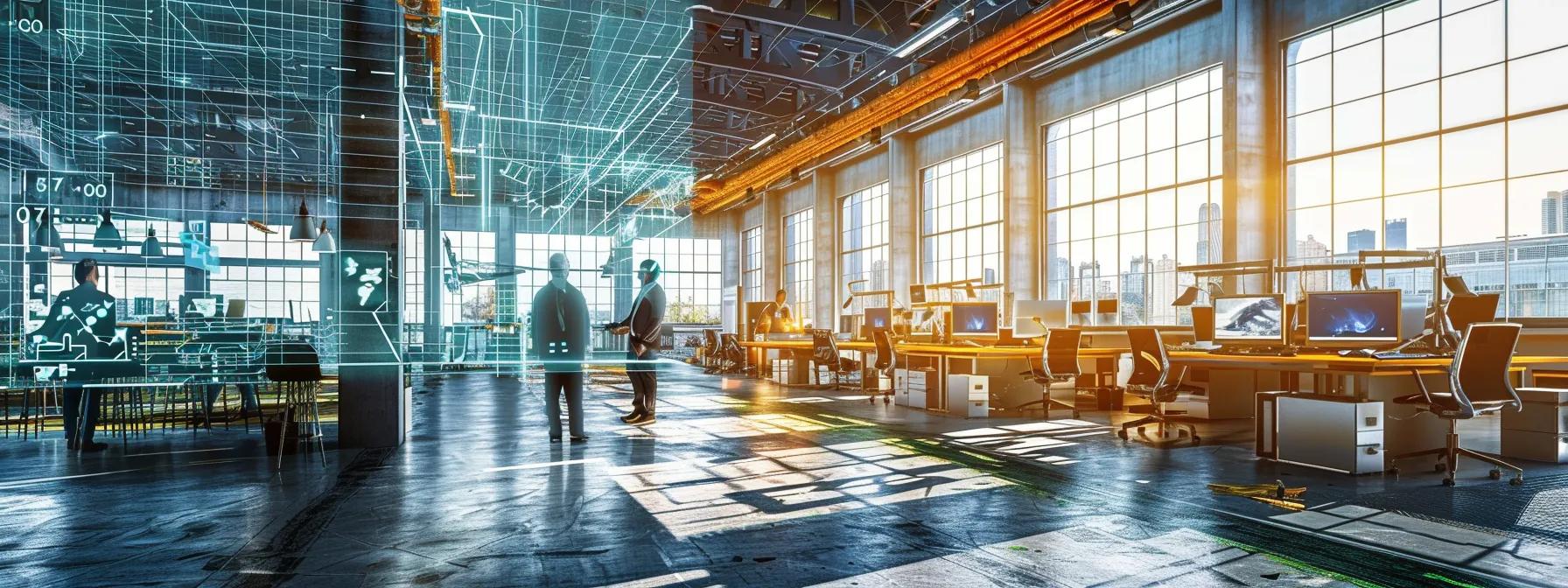
Recent trends include the integration of advanced digital tools, predictive analytics, and enhanced training methodologies. In an effort to serve a broader range of sectors, many industries-we-serve companies are now adopting a design-installation approach when setting up ladder systems and guardrail systems to ensure proper safety measures. Innovations such as IoT sensors, mobile inspection platforms, and augmented reality (AR) training modules are reshaping the industry by streamlining inspections, providing real-time data, and bolstering annual-maintenance routines that enhance us fall protection. For more insights and solutions, get a free quote via our blog to explore cutting-edge safety practices.
How Are Technology and Digital Tools Enhancing Fall Protection?
Digital tools automate routine inspections and enable real-time equipment monitoring, supporting annual-maintenance schedules. IoT sensors integrated into harnesses and lanyards and us fall protection measures alert maintenance teams to potential failures, while mobile apps simplify documentation and reporting. Augmented reality training platforms offer immersive learning experiences that enhance knowledge retention and the practical application of safety procedures across industries-we-serve.
What New Regulations Are Affecting Fall Protection Practices?
New regulatory demands include stricter OSHA guidelines and updated ANSI standards, requiring more frequent inspections under annual-maintenance protocols and detailed documentation. These changes push organizations—especially those in industries-we-serve—to adopt advanced maintenance tools such as ladder systems and enforce rigorous training programs, ensuring that safety protocols evolve alongside regulatory expectations and comprehensive us fall protection measures.
How Is Safety Culture Evolving in High-Risk Workspaces?
Safety culture is increasingly focused on prevention through continuous education, regular maintenance (annual-maintenance), and real-time monitoring. Organizations are moving from reactive to proactive safety measures – including the integration of ladder systems, guardrail systems, and us fall protection – recognizing that a strong safety culture improves productivity, morale, and overall operational efficiency. This shift creates an environment of trust and accountability that reduces the risk of accidents and fosters long-term success.
Where Can You Find Expert Fall Protection Maintenance and Training Services?
Specialized companies offer comprehensive fall protection services tailored to diverse industrial needs, with a focus on industries-we-serve that address unique safety challenges. These providers are experts in OSHA standards and employ advanced digital tools for inspections and customized training programs, including the integration of ladder systems, guardrail systems, and lifeline systems. Partnering with such companies ensures that every aspect of a safety program—from policy development to annual-maintenance—is managed by professionals.
What to Look for in a Fall Protection Service Provider?
Organizations should choose providers with certified professionals, a proven compliance record, and a comprehensive service offering that includes regular inspections, annual-maintenance, and personalized training. Transparent documentation, advanced digital inspection tools, and responsive customer support—with options for design-installation—are key indicators of a reliable provider. For more information on our offerings, including lifeline systems and industries-we-serve, please visit our website.
How Do Professional Services Ensure OSHA Compliance?
Professional services adhere to regulatory guidelines and industry best practices throughout the inspection, annual-maintenance, and training processes. By using standardized checklists, advanced tools, and detailed record keeping, these services ensure that all safety equipment, including ladder systems and guardrail systems, complies with OSHA standards and that any issues are addressed promptly.
What Are the Benefits of Partnering With a Full-Service Fall Protection Company?
A full-service partner streamlines maintenance processes by integrating annual-maintenance strategies, reduces downtime, and enhances safety training with us fall protection measures through a single coordinated service provider. This approach ensures consistency in inspections, repairs, and the design-installation of systems. Advanced digital monitoring and proactive maintenance further translate into cost savings and a safer work environment for industries-we-serve.
Table: Comparison of Fall Protection Equipment Features and Maintenance Benefits
Before diving into the final FAQ section, the table below provides an overview of key fall protection components such as guardrail systems, ladder systems, and lifeline systems, their primary functions, common maintenance tasks including annual-maintenance procedures, and the benefits of regular upkeep.
| Equipment Component | Primary Function | Common Maintenance Task | Maintenance Benefit |
|---|---|---|---|
| Harness | Distributes fall impact | Visual inspection, strap replacement | Reduces risk of harness failure |
| Lanyard | Connects fall arrest system | Check for fraying and damage, cleaning | Ensures secure attachment |
| Anchorage Point | Fixed support point | Verification of secure installation | Prevents accidental detachment |
| Lifeline | Provides shock absorption | Regular tension calibration, cleaning | Enhances shock absorption |
| Connectors & Buckles | Secure equipment fastening | Lubrication and corrosion checks | Maintains optimal functionality |
This table highlights how regular maintenance is crucial for ensuring equipment integrity and preventing failures.
List: Essential Fall Protection Maintenance Checklist
To support organizations, here is an essential checklist for routine fall protection maintenance:
- Conduct a visual inspection for damage on all straps and webbing.
- Check metal components for signs of corrosion or deformation.
- Clean equipment with appropriate non-corrosive cleaning agents.
- Verify that all connectors, buckles, and lanyards are securely attached.
- Document inspection findings and schedule necessary repairs.
- Test anchorage points for stability and proper installation.
- Replace any compromised or worn parts immediately.
- Ensure that maintenance records are up-to-date for regulatory compliance.
This checklist provides a concise guide to maintaining the integrity of fall protection equipment.
Frequently Asked Questions
Q: What is the importance of fall protection maintenance?
A: It safeguards employees from dangerous falls and equipment failures, ensuring that all safety gear—including annual-maintenance protocols and guardrail systems—is in optimal condition.
Q: How frequently should fall protection equipment be inspected?
A: At least annually, with more frequent inspections in high-risk areas or after critical incidents.
Q: What are the critical components of a fall protection system?
A: The system includes harnesses, lanyards, lifelines, anchorage points, lifeline systems, and connectors — all of which must work together to ensure safety. For optimal performance, our design-installation process integrates these components with an annual-maintenance schedule, a critical part of us fall protection solutions.
Q: Can regular training improve the effectiveness of fall protection, such as lifeline systems?
A: Yes, hands-on and customized training — including key aspects of design-installation — significantly improve proficiency and reduce accident likelihood across industries-we-serve.
Q: How do digital tools contribute to fall protection maintenance?
A: They provide real-time monitoring, efficient documentation, and predictive analytics to address maintenance issues before escalation. By enabling proactive annual-maintenance scheduling and timely updates for lifeline systems, ladder systems, and guardrail systems, these tools ensure that us fall protection strategies remain effective and compliant.
Q: What should be included in a fall protection maintenance log?
A: Dates of inspections, including annual-maintenance checks on guardrail systems and lifeline systems, equipment status, repair actions, and responsible personnel to ensure accountability and compliance.
Q: Who should conduct fall protection inspections?
A: Certified safety professionals or trained maintenance personnel to ensure adherence to regulatory standards.
Q: How do new regulations affect fall protection practices?
A: They require more frequent inspections, particularly within annual-maintenance routines, and detailed documentation. This has led industries-we-serve to adopt digital maintenance systems that integrate ladder systems and guardrail systems to further reinforce training and meet us fall protection standards.
Q: What benefits does partnering with a full-service fall protection company offer?
A: Such partnerships provide expertise in design-installation, streamline processes through annual-maintenance, and enhance training on us fall protection, resulting in improved compliance, lower costs, and a safer work environment.
Final Thoughts
Fall protection maintenance and training are critical for long-term workplace safety and operational efficiency. Strict adherence to inspection protocols and regular, professional maintenance, including annual-maintenance checks, significantly reduces hazards and prevents life-threatening accidents. Coupled with comprehensive training and advanced technological tools such as lifeline systems and guardrail systems, organizations from industries-we-serve can foster a proactive safety culture that meets regulatory requirements while enhancing productivity and employee morale. Investing in robust fall protection programs and design-installation strategies ultimately leads to reduced risks, better compliance, and a safer, more efficient work environment.

